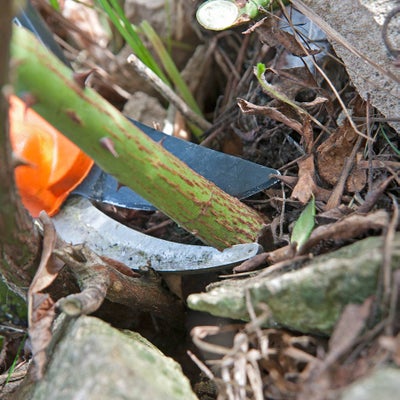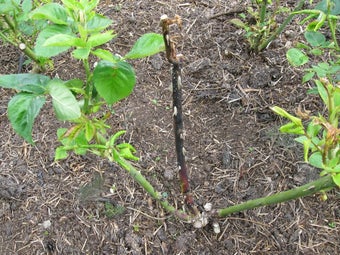
Quick facts
Suitable for - All roses
Timing - See individual profiles
Difficulty - Moderate
Suitable for...
The following tips are for all roses. However, there is more detailed pruning advice available for specific types;
When to prune roses
Late winter (February or March) is often a good time for pruning roses but see the individual rose profiles above for more specific timing.
How to prune roses: general tips
When tackling roses bear the following in mind;
- Cuts should be no more than 5mm (¼ in) above a and should slope downwards away from it, so that water does not collect on the bud. This applies to all cuts, whether removing dead wood, or annual pruning
- Cut to an outward-facing bud to encourage an open-centred shape. With roses of spreading habit, prune some stems to inward-facing to encourage more upright growth
- Cut to the appropriate height, if a is not visible
- Cuts must be clean, so keep your secateurs sharp. For larger stems, use loppers or a pruning saw
- Prune dieback to healthy white pith
- Cut out dead and diseased stems and spindly and crossing stems
- Aim for well-spaced stems that allow free air flow
- On established roses, cut out poorly flowering old wood and saw away old stubs that have failed to produce new shoots
- With the exception of climbing roses and shrub roses, prune all newly planted roses hard to encourage vigorous shoots
- Trace suckers back to the roots from which they grow and pull them away
These tips should be read in conjunction with the appropriate rose pruning profile.
Pruning an unknown rose
Perhaps if you've inherited a rose or lost the label - you may not know what type of rose you have. In which case, follow our basic tips below to get you started. Prune in February or March.
Climber or rambling type
If your rose has long arching stems, is very tall or needs some sort of support to hold it up then it is most likely a climber or rambler.
- Where there is only one thick old stem going down to ground level, go easy as it may not regenerate if cut hard back. Instead, shorten by between a third and a half
- For multi-stemmed roses, aim to take out one or two of the oldest looking stems (i.e. grey, flaky ) to as near to the base as you can
- If the response the next season is for the rose to send out a lot of strong but barren (non-flowering) shoots, chances are it is a rambler. A rose that responds with less vigorous, flowering growth is probably a climber
Shrub or bush type
Very small roses are easy to recognise so follow our guide for patio and miniature roses. Larger roses might be any number of types, from tea and floribunda to species and shrub roses. If in doubt;
- Take out one or two stems as close to ground level as you can or to younger looking (green barked) side stems low down
- Shorten remaining stems by between a third and a half
- If the response the next season is lots of vigorous regrowth that flowers well, chances are it is a floribunda or hybrid tea
- Otherwise, it is more likely to be a type of shrub rose
Feed all pruned roses with a general purpose or rose fertiliser in spring. with garden or manure.





